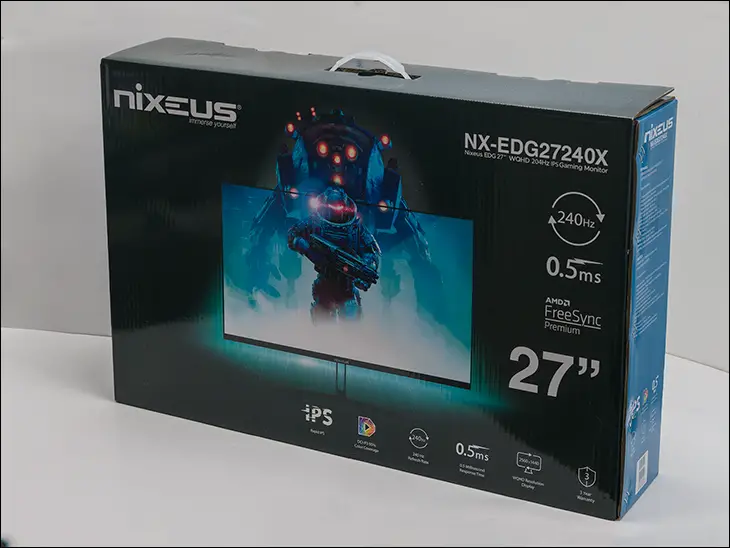Up until recently, most hard-core PC gaming enthusiasts rocked 27-inch 1080P monitors. 27 inches because that is as big as you can go before the dot-pitch size becomes ridiculous, and 1080P because that is as high a resolution as you can get on a monitor if you want uber-fast refresh rates. Thankfully, with the advent of 1440P IPS panels capable of 240Hz things are finally changing. Sadly, they were not changing all that fast.. as this new breed of monitors are priced like the premium products they are. Up until now that is. Much like what Nixeus did to the 144Hz 4K market the recently released $650 (USD) EDG27240X plans to bring a much-needed dose of value to the ultra-high frame rates 1440P marketplace.

On first blush, reconciling ‘value’ and an asking price a full $200 more than its (165Hz) EDG-27X sibling would appear to require a wee bit of doublethink. However, the EDG-27240X is not meant to replace the rather new EDG-27X. Both are targeted towards different buyers with different needs. Both will be the mainstay of Nixeus’ non-4K monitor line-up for the foreseeable future. Yes, we will indeed compare and contrast both in the coming pages but that selfsame “high” $650 asking price appears to be a veritable bargain when judged against ViewSonic’s “Elite” or other 240Hz, 1440P, 27-inch offerings. These monitors are the EDG-27240X’s direct competitors and all of those are in the 9-bill range. Ouch.
We say this as like the ELITE XG271QG (and nearly all flat 1440P, 240Hz IPS “95% DCI-P3” capable monitors out there) the Nixeus EDG-27240X makes use of an AU Optronic’s panel. To be precise it uses the M270DAN08.9 which quickly made waves when it was announced in late 2020 and started appearing inside new model in 2021. This panel offers excellent color reproduction, blazing fast refresh rates and does both while also offering all the benefits IPS/AHVA has over Twisted Nematic panel technology… which was the only ‘easy’ way to get 1440P and 240Hz in the past.
Of course, there are differences. Major differences. Even major differences compared to the cheaper $450(ish) EDG27X. These run the gamut from the included stand to lack of a NVIDIA G-Sync. Do these changes merit spending a whopping $250 (or more)? That is what most enthusiasts will have to ask themselves when thinking about the EDG27240X. By the end of this review we hope to help clarify what the EDG-27240X does, and does not, offer potential buyers. Armed with that information it will become obvious which way you should lean when making your decision.









